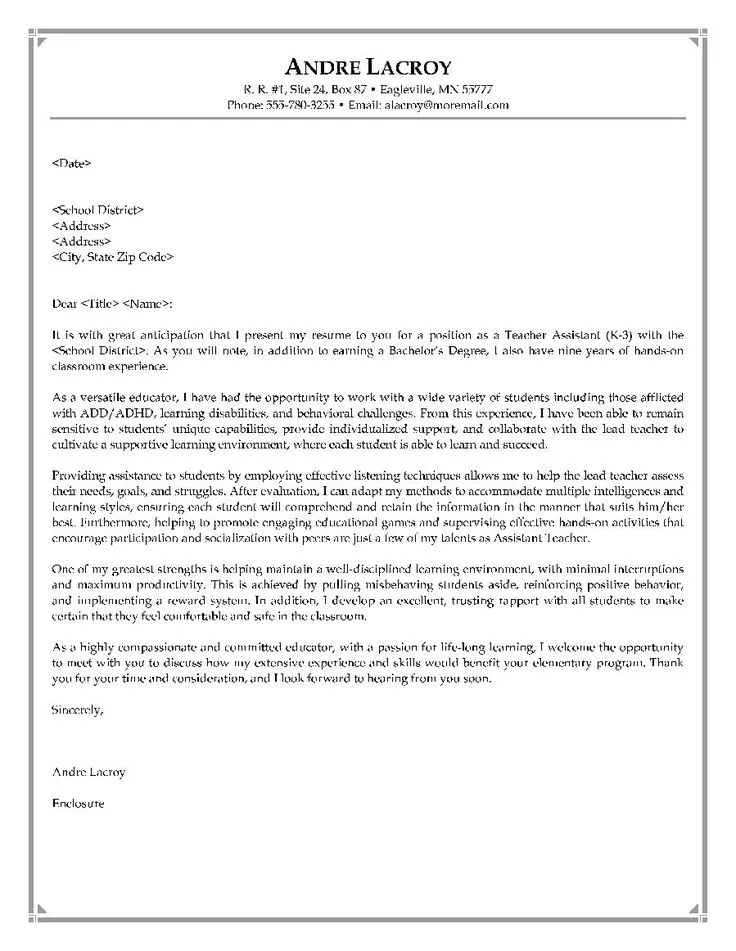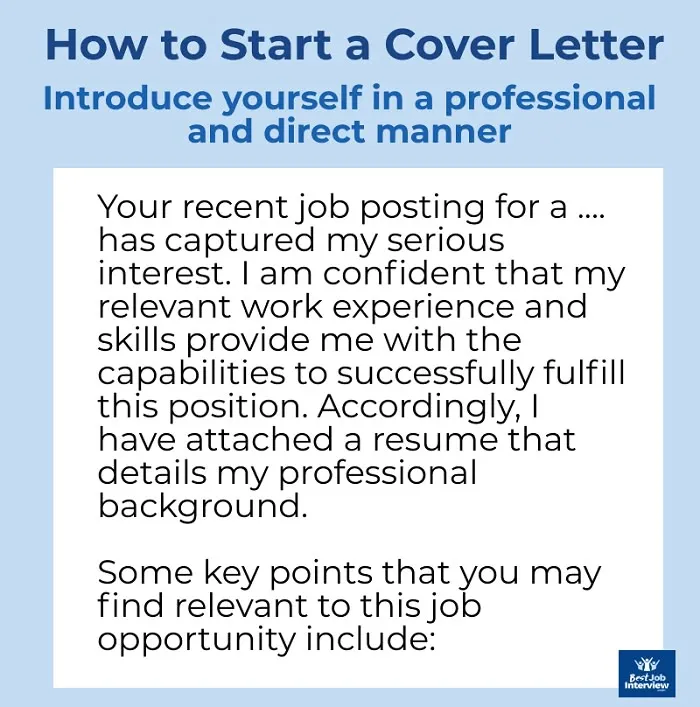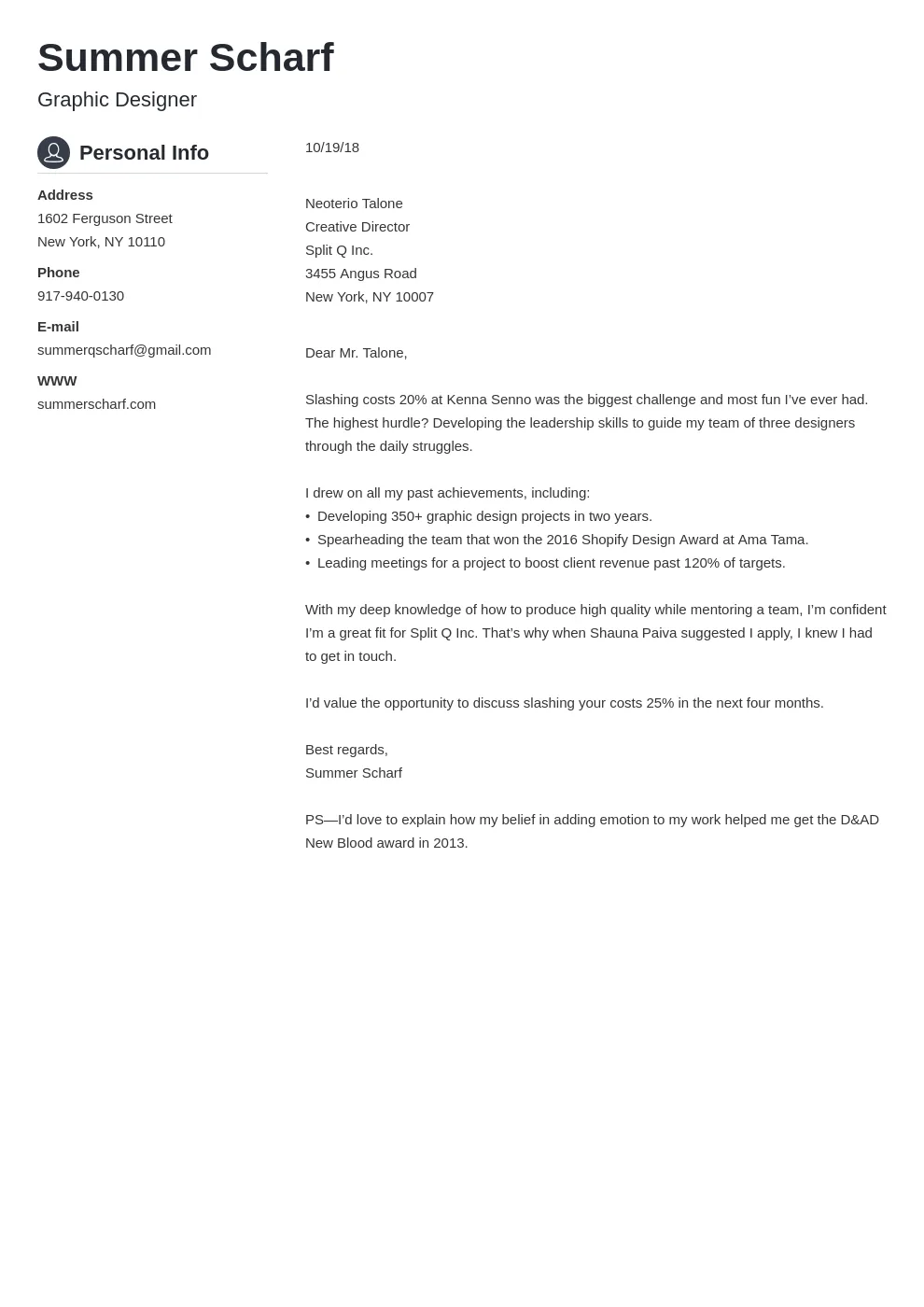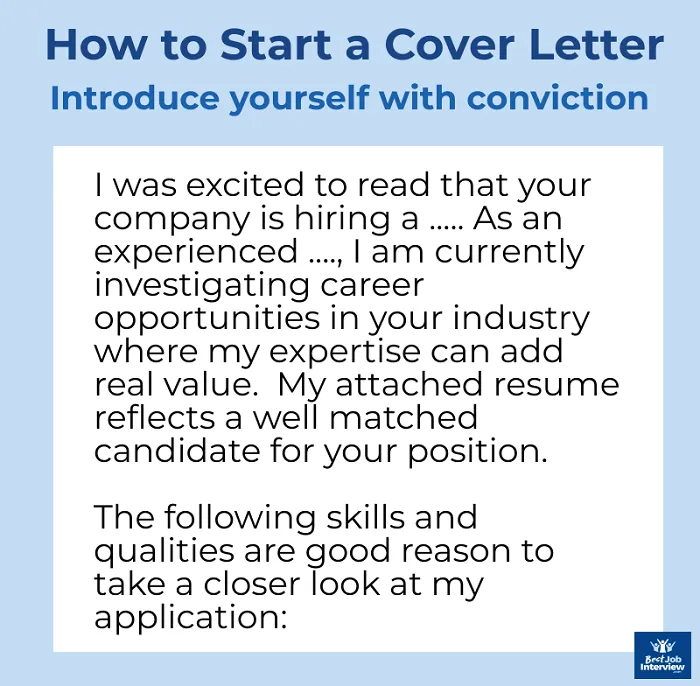What is a Good Cover Letter Intro?
A good cover letter introduction is your first and perhaps most crucial opportunity to make a positive impression on a potential employer. It’s the handshake, the initial eye contact, the opening line that determines whether the reader will continue to engage with your application. The introduction should be concise, impactful, and designed to immediately capture the reader’s attention. It sets the tone for the rest of your cover letter and should clearly state the position you’re applying for and, most importantly, why you are the ideal candidate. The intro should be about 3-4 sentences long and it should avoid sounding generic and highlight your interest in the specific opportunity.
Why is a Strong Intro Important?
A strong cover letter intro is vital because it significantly influences the hiring manager’s perception of you. It’s the gateway to the rest of your letter and, by extension, your resume. A well-crafted intro immediately communicates your interest in the position, highlights your relevant skills and experience, and demonstrates your understanding of the company’s needs. It also sets you apart from other applicants who might have generic or uninspired introductions. If your introduction fails to capture attention, the hiring manager might not be motivated to read the rest of your letter, potentially missing out on the valuable information that showcases your qualifications. It serves as the foundation for building a compelling narrative about why you are the best fit for the job.
How to Grab Attention Immediately

To grab attention immediately, start your cover letter with a compelling hook. This could be a brief anecdote that showcases a relevant skill, a direct reference to a company achievement, or a statement of your enthusiasm for the position. The hook should be closely related to the job requirements and should avoid clichés. Another effective strategy is to mention a mutual connection, such as a person you know at the company, this can add a layer of credibility and demonstrate your existing network. A clear and concise statement of your interest, specifying the position you are applying for, will quickly establish your intentions. The first few sentences should demonstrate you’ve researched the company and understand their needs.
Highlighting Your Value
Your cover letter introduction should immediately highlight your key value propositions, what you bring to the table. This means succinctly mentioning your most relevant skills, experiences, and accomplishments. Instead of simply listing your qualifications, tailor your intro to emphasize how your abilities align with the job requirements. Use action verbs and quantify your achievements whenever possible. For example, if the job description mentions the need for project management skills, you might open with something like, ‘With a proven track record of successfully managing projects, including [specific project], I am confident I can bring immediate value to your team.’ This direct approach immediately informs the hiring manager about your suitability for the role.
Mentioning Mutual Connections
If you have a mutual connection with someone at the company, mentioning them in your intro can significantly boost your credibility. This shows you have an inside perspective and could provide a degree of trust. When mentioning a connection, be sure to include their name and your relationship to them in the first sentence, such as ‘I was excited to learn about the [Job Title] position, and having spoken with [Name], I am eager to apply.’ This conveys that you’ve done your homework and are leveraging your network. It is best to get permission from the connection beforehand. If the connection is a high-level executive, their endorsement can be particularly impactful. This approach is especially effective if the company values internal referrals.
Demonstrating Enthusiasm for the Role

Expressing genuine enthusiasm for the role and the company is essential in a good cover letter introduction. This can be as simple as directly stating your excitement about the opportunity. Go beyond a generic statement and demonstrate your genuine interest by mentioning something specific that excites you about the company or the position. Do some research and tailor your enthusiasm to the company’s values, mission, or recent accomplishments. Consider including a sentence that demonstrates you understand the company’s goals. This will show the hiring manager that you’re not only qualified but also passionate about the role. Make sure your enthusiasm is not overstated to come off as insincere.
Tailoring Your Intro to the Job
A generic cover letter intro is a surefire way to end up in the rejection pile. To captivate the hiring manager, it is crucial to tailor your introduction specifically to each job. Begin by carefully reading the job description and identifying the key skills, experiences, and qualifications the employer is seeking. Then, customize your introduction to directly address those requirements. Highlight the most relevant accomplishments and skills that match the job posting. Show the employer that you’ve taken the time to understand their needs and that you’re the best fit. Avoid using the same introduction for multiple job applications and make sure that your introduction matches the job description’s language and tone.
Avoiding Common Mistakes
Several common mistakes can undermine your cover letter introduction. Avoid starting with a generic phrase such as “I am writing to apply”. These openings are overused and lack impact. Do not simply reiterate information from your resume without adding any new value. Avoid including irrelevant details or personal information that doesn’t pertain to the job. Using jargon or technical terms that the hiring manager might not understand is another common error. Always proofread your introduction and the rest of your cover letter carefully for grammatical errors and typos, which can reflect poorly on your attention to detail. Make sure the introduction is concise, and avoid rambling on.
Using a Formal Tone

Maintaining a professional and formal tone is vital for a strong cover letter intro. While it’s important to showcase your personality, the primary goal is to communicate your professionalism and respect for the opportunity. Use formal language and avoid slang, contractions, or casual language that may not be appropriate for a professional setting. Address the hiring manager correctly, using their title and last name, if possible. Keep the introduction concise and to the point, avoiding overly flowery language. The goal is to present yourself as a polished and serious candidate who understands the expectations of a professional workplace.
Focusing on Your Accomplishments
Rather than simply listing your job responsibilities, focus on showcasing your achievements and the impact you’ve made in previous roles. Use your introduction to highlight your most significant accomplishments that are relevant to the job requirements. Quantify your achievements whenever possible by using numbers, percentages, or specific results to demonstrate the value you brought to previous employers. This approach will make your intro more compelling and show the hiring manager that you have a track record of success. For instance, instead of saying ‘Managed a team,’ say ‘Led a team of 10 to increase sales by 15% in one quarter.’
Proofreading and Polishing Your Intro
Before submitting your cover letter, thoroughly proofread and polish your introduction. This ensures that your first impression is as professional and impactful as possible. Check for grammatical errors, spelling mistakes, and typos, which can detract from your credibility. Ensure that your intro flows smoothly and is easy to read. If possible, ask someone else to review your introduction to catch any mistakes you may have missed. A second pair of eyes can provide valuable feedback on clarity, tone, and overall effectiveness. Pay attention to the details and take the time to refine your introduction until it accurately reflects your qualifications and enthusiasm.
